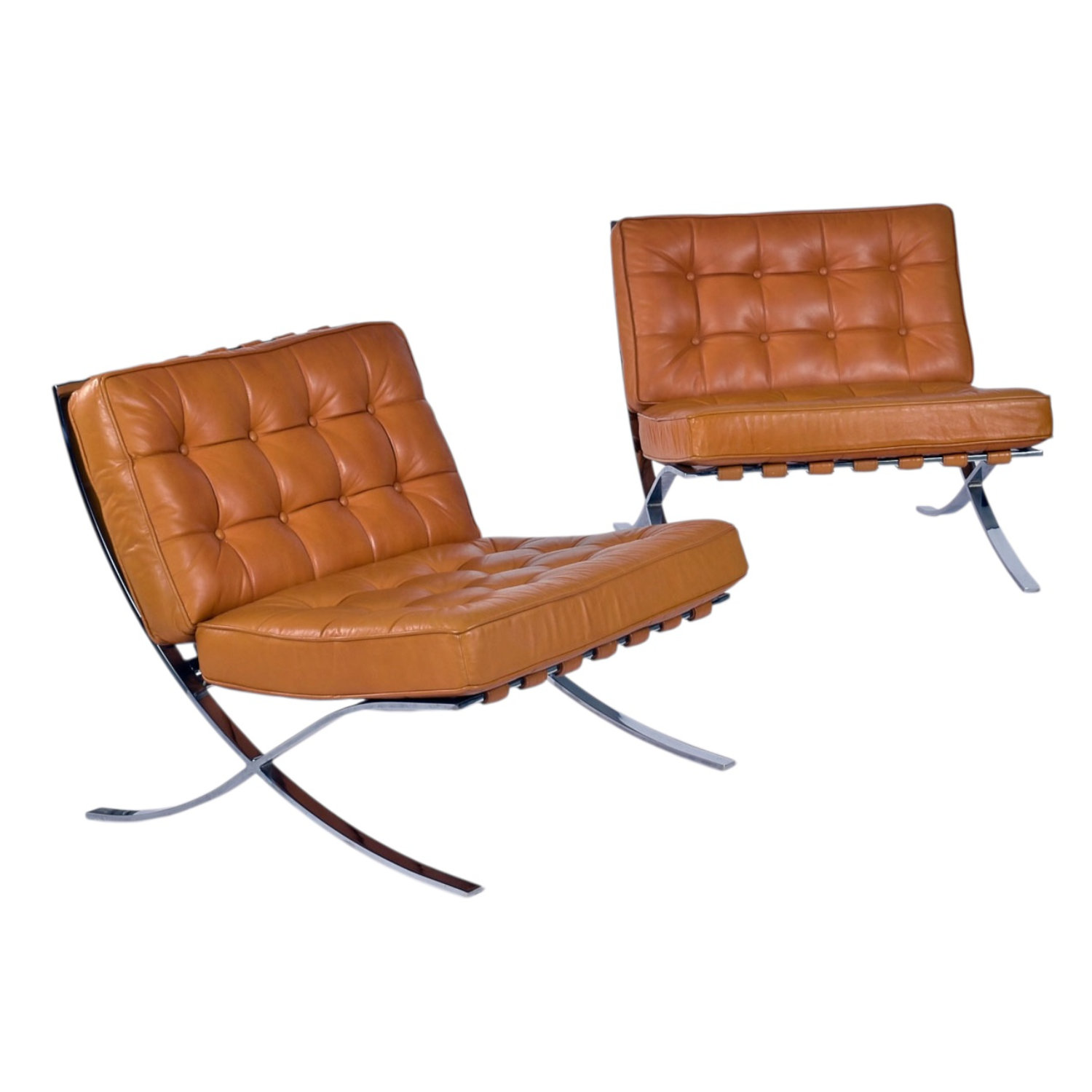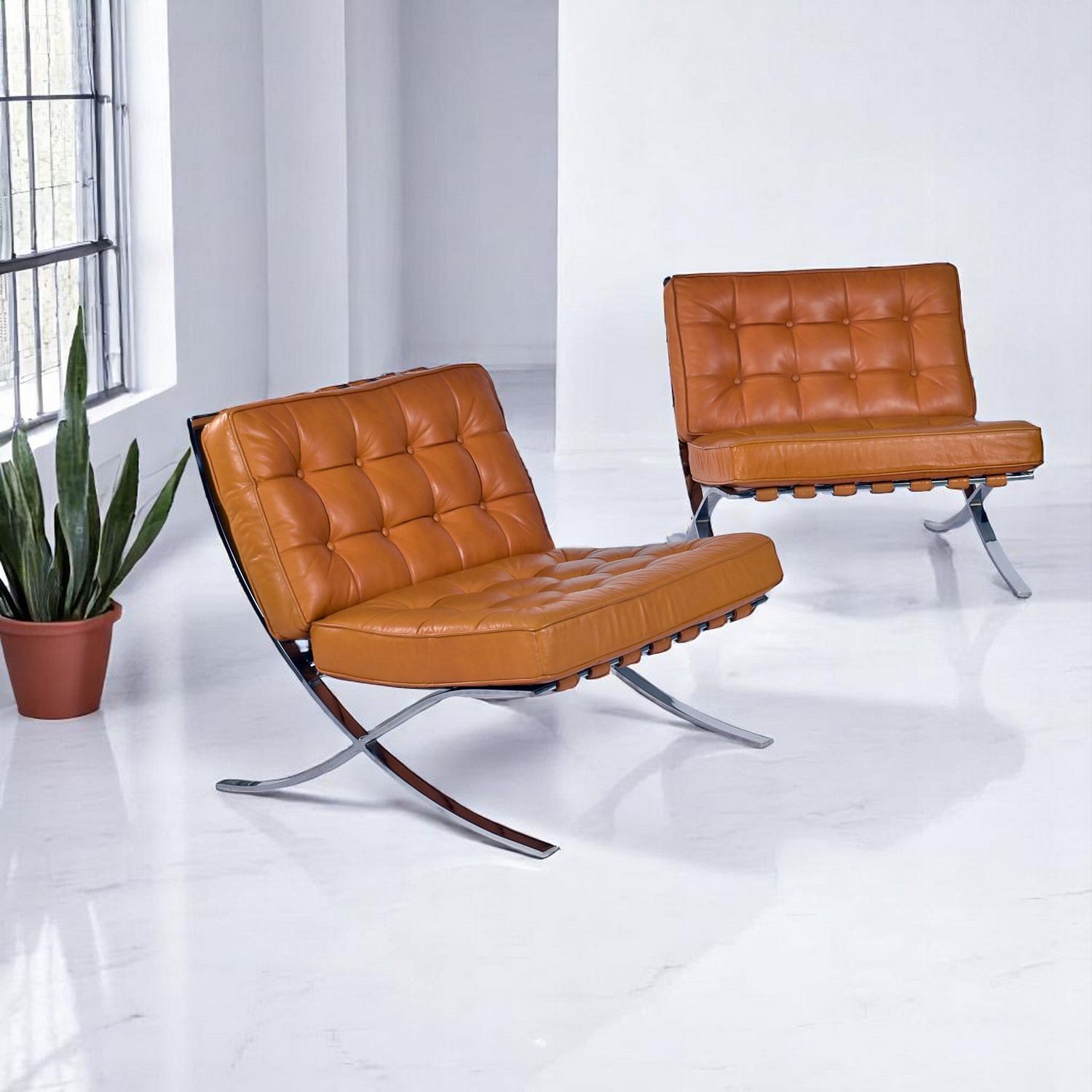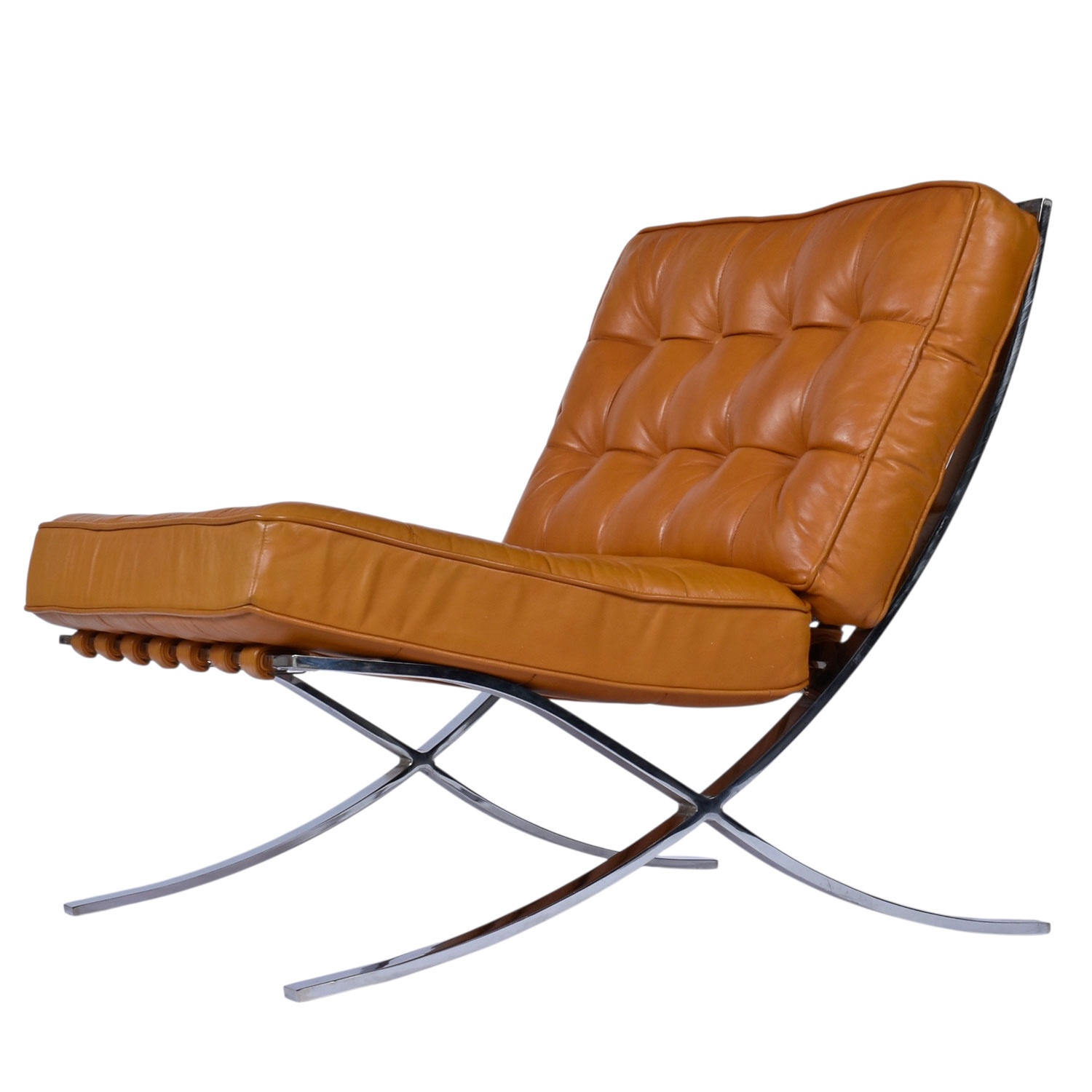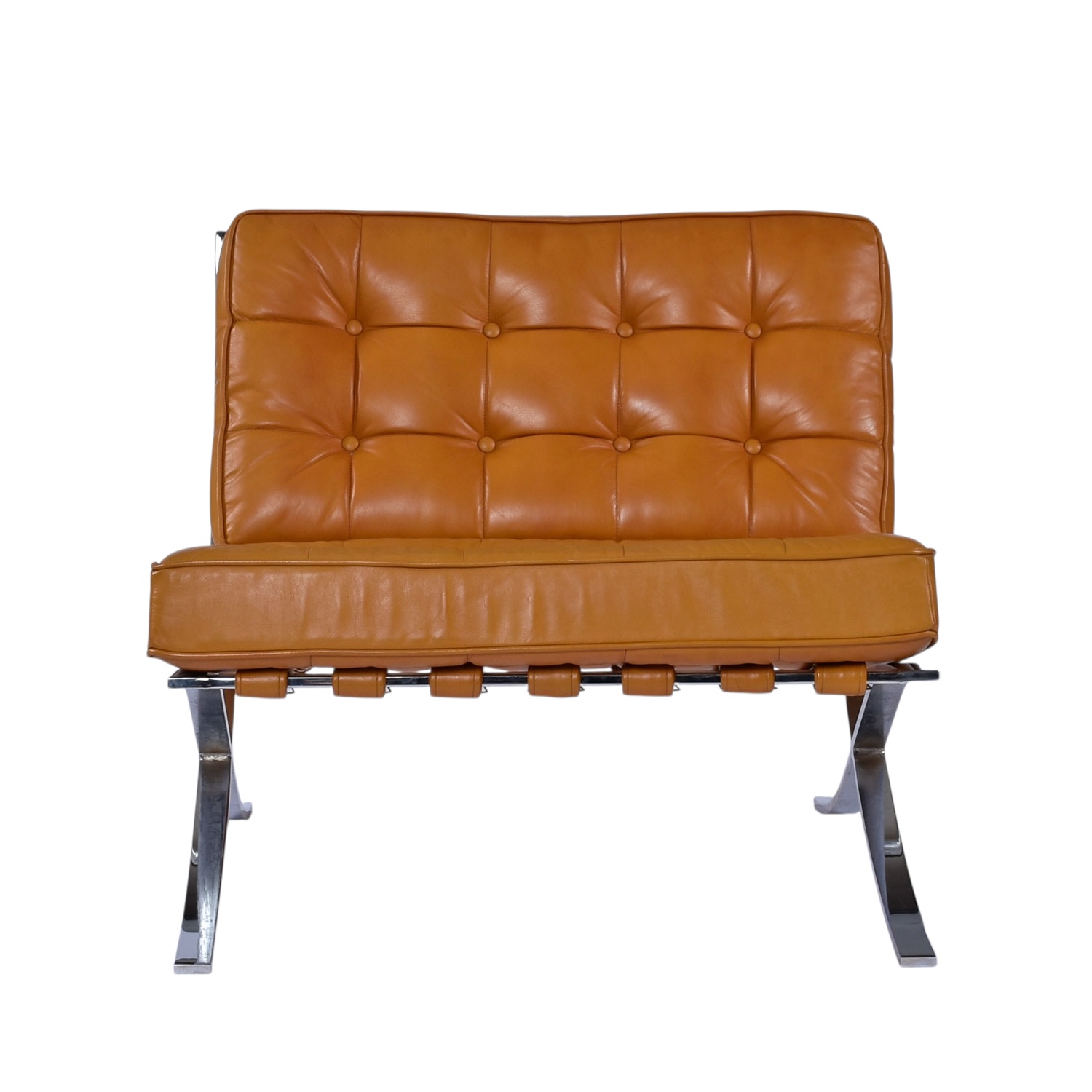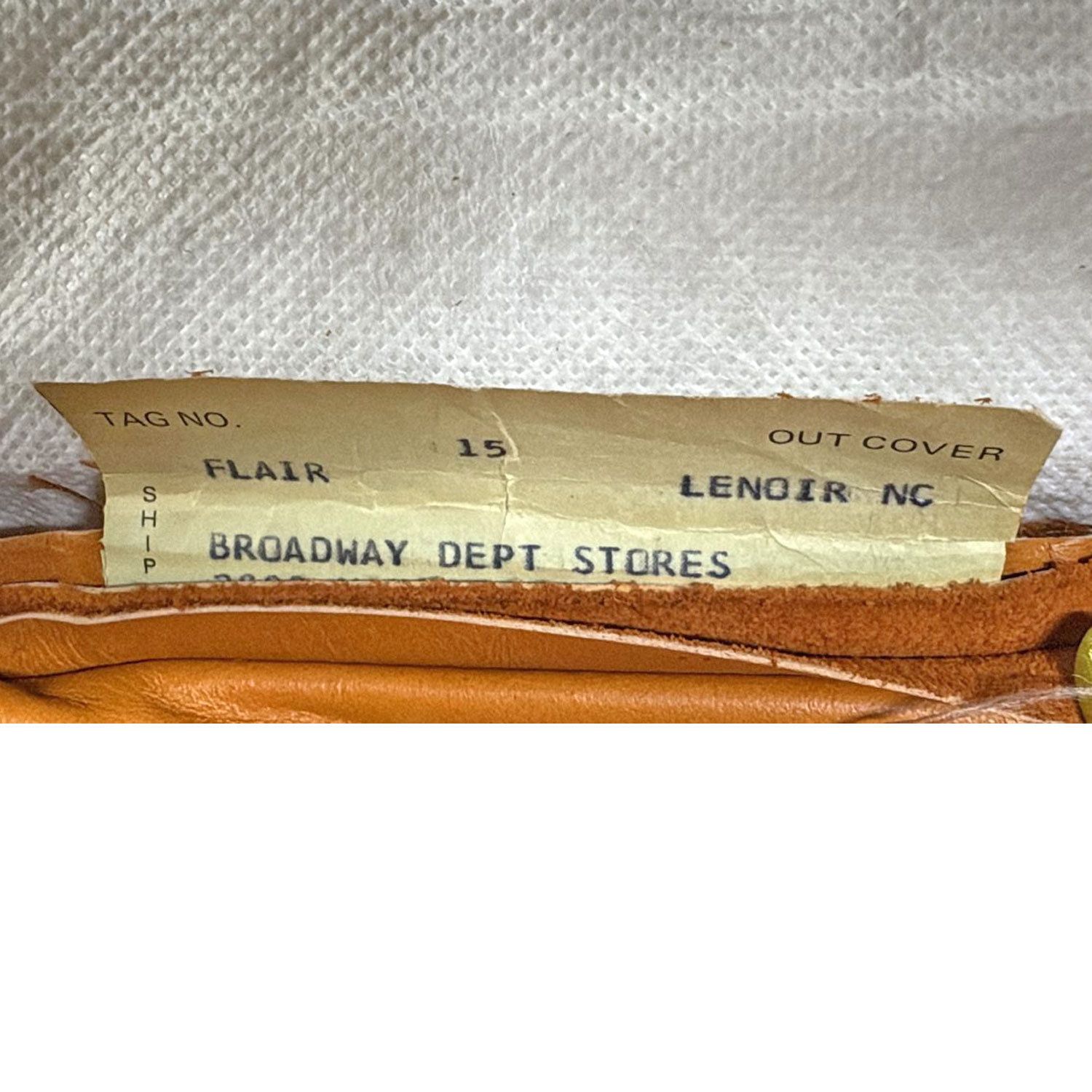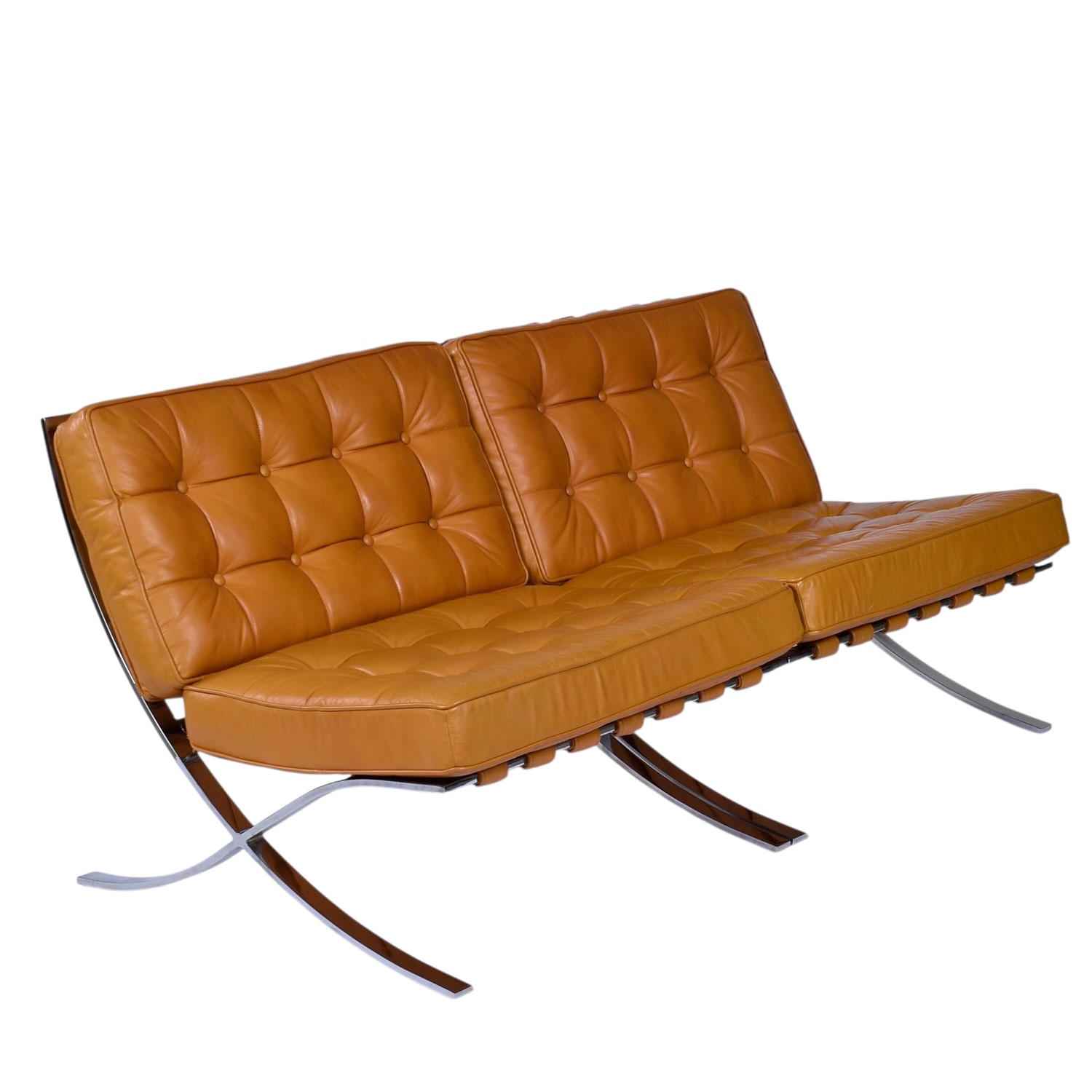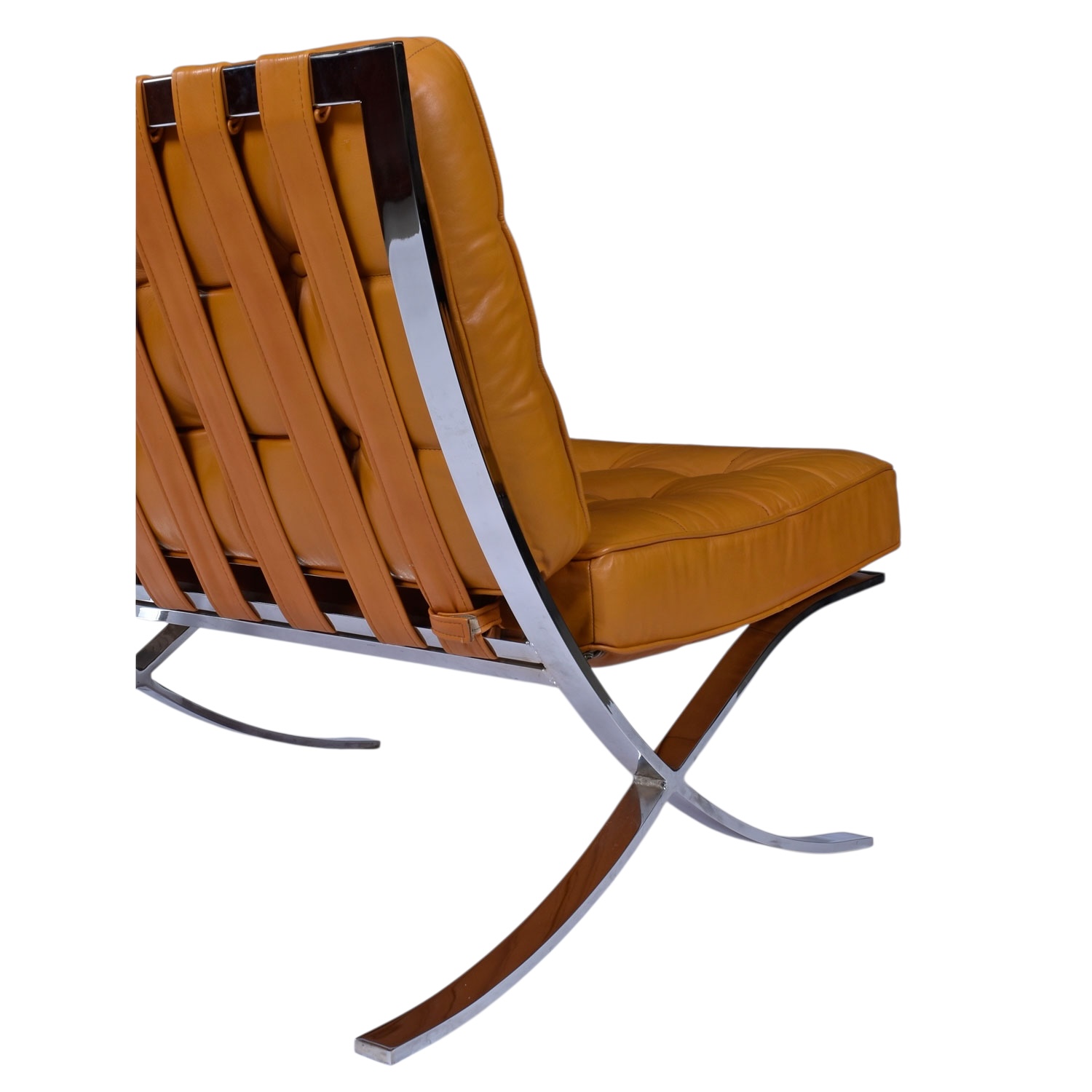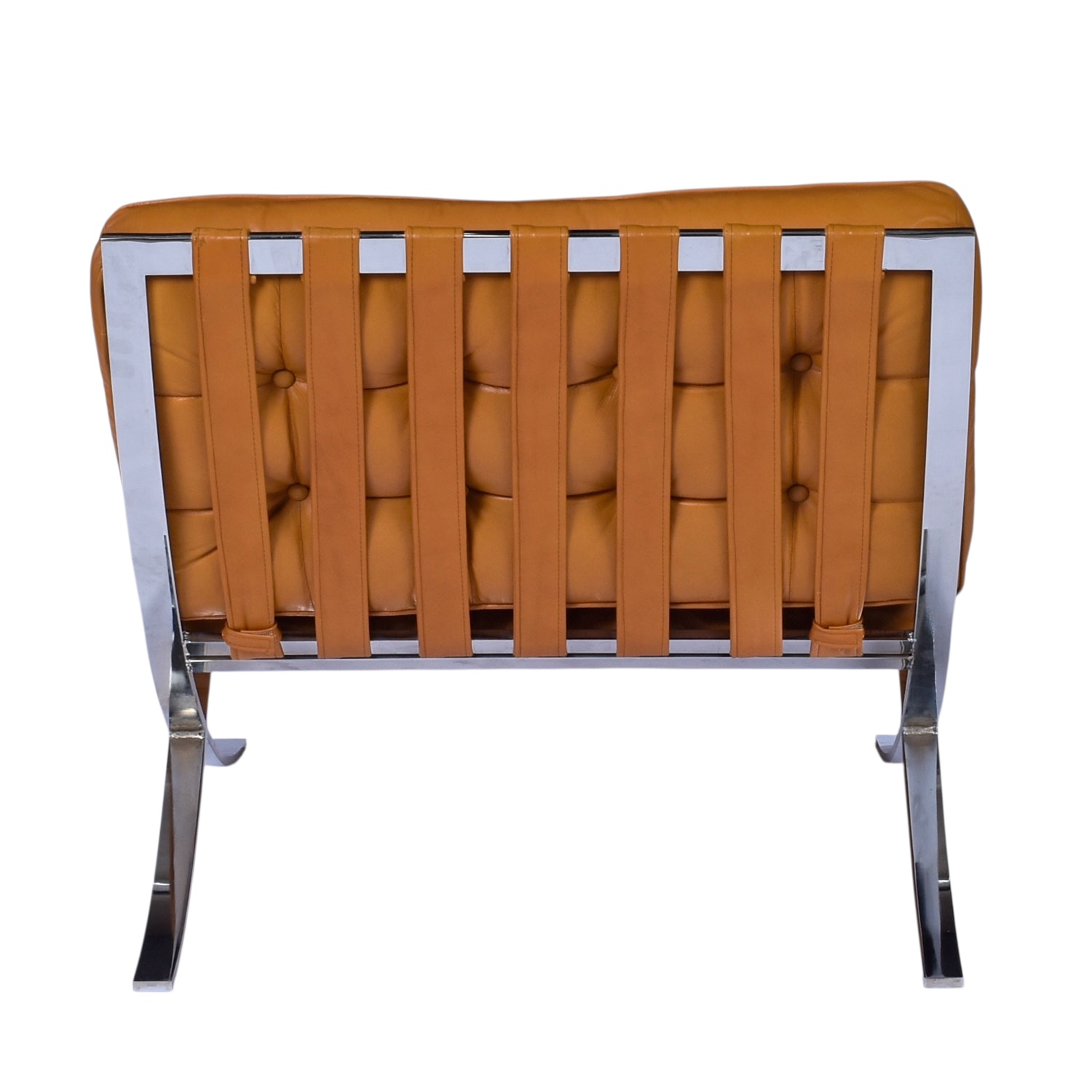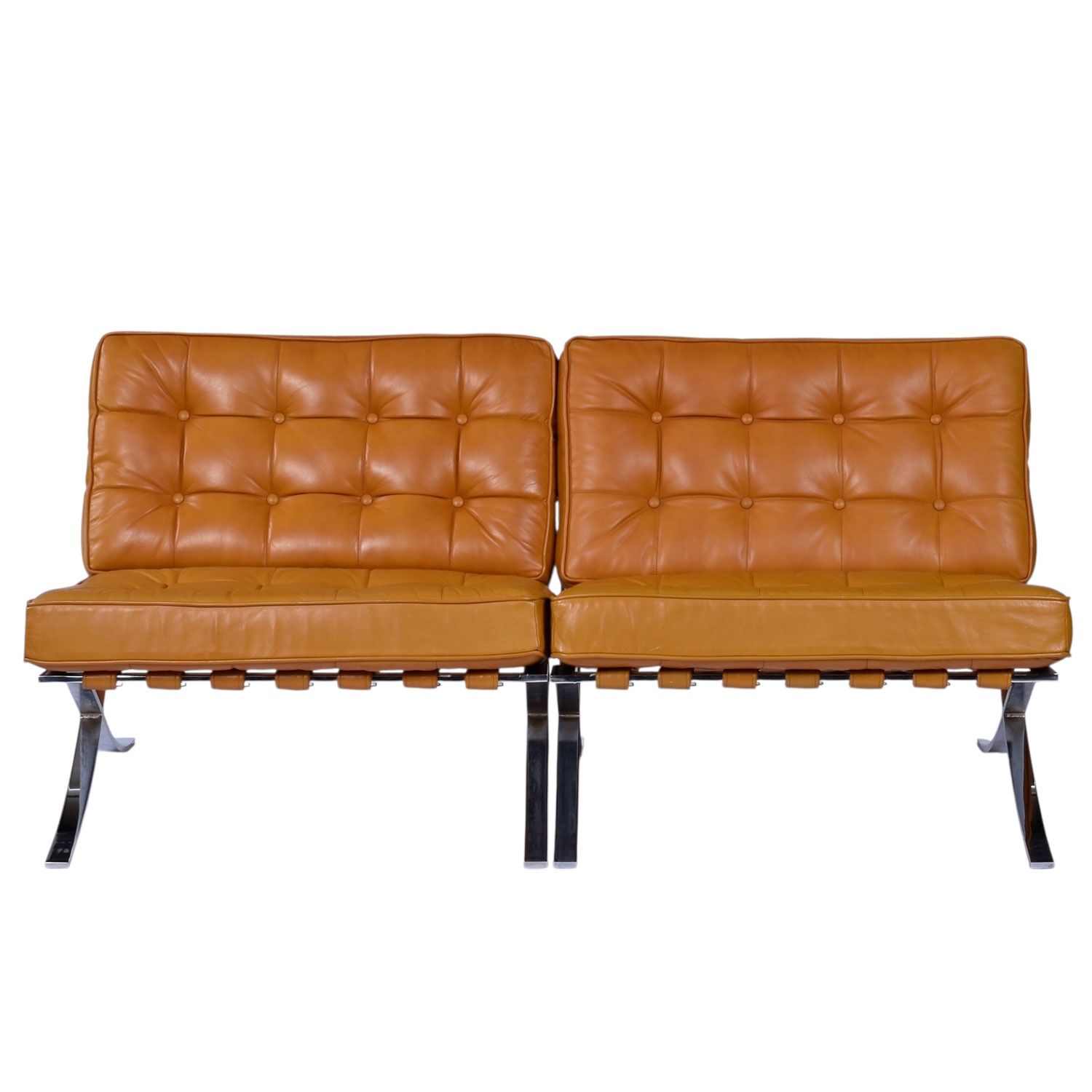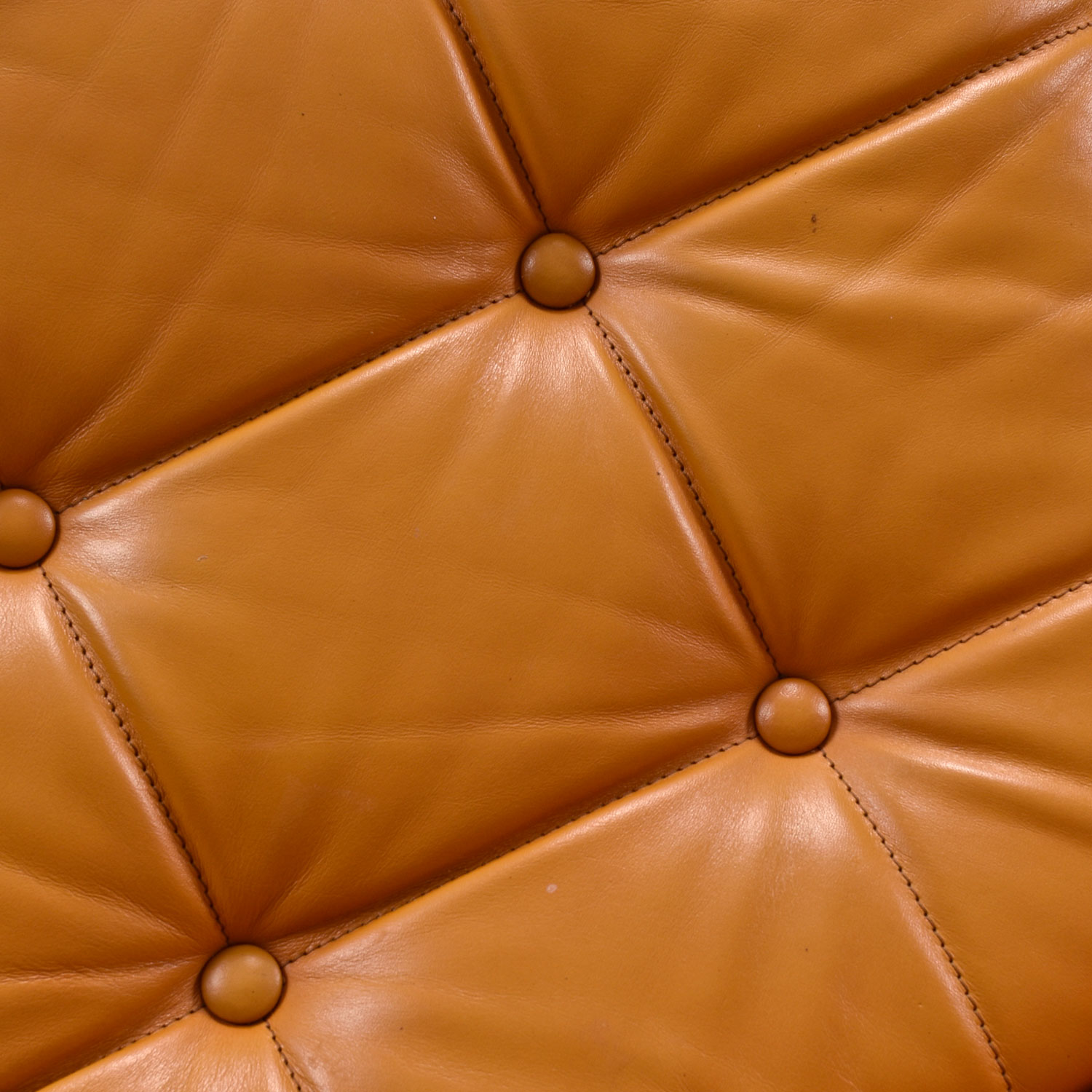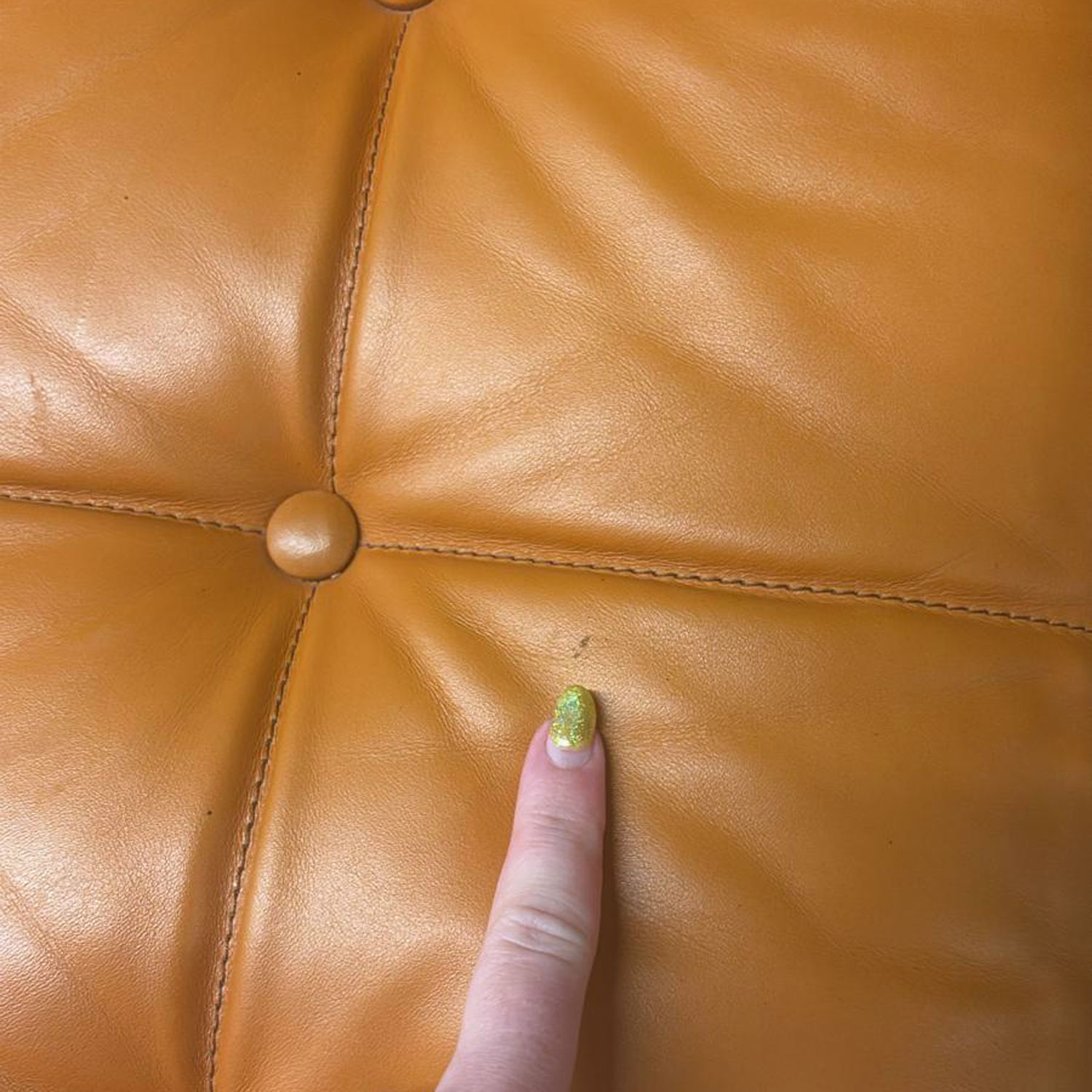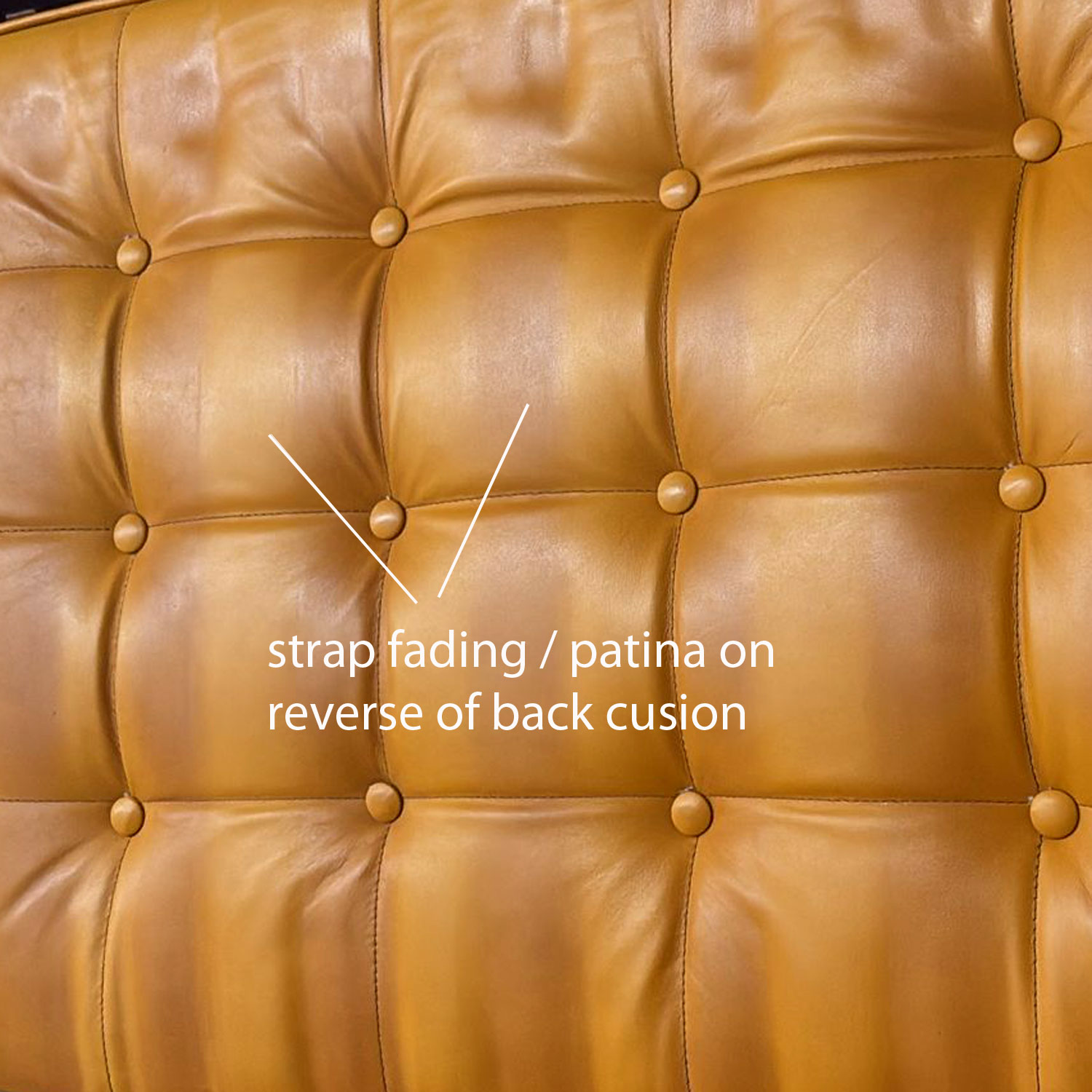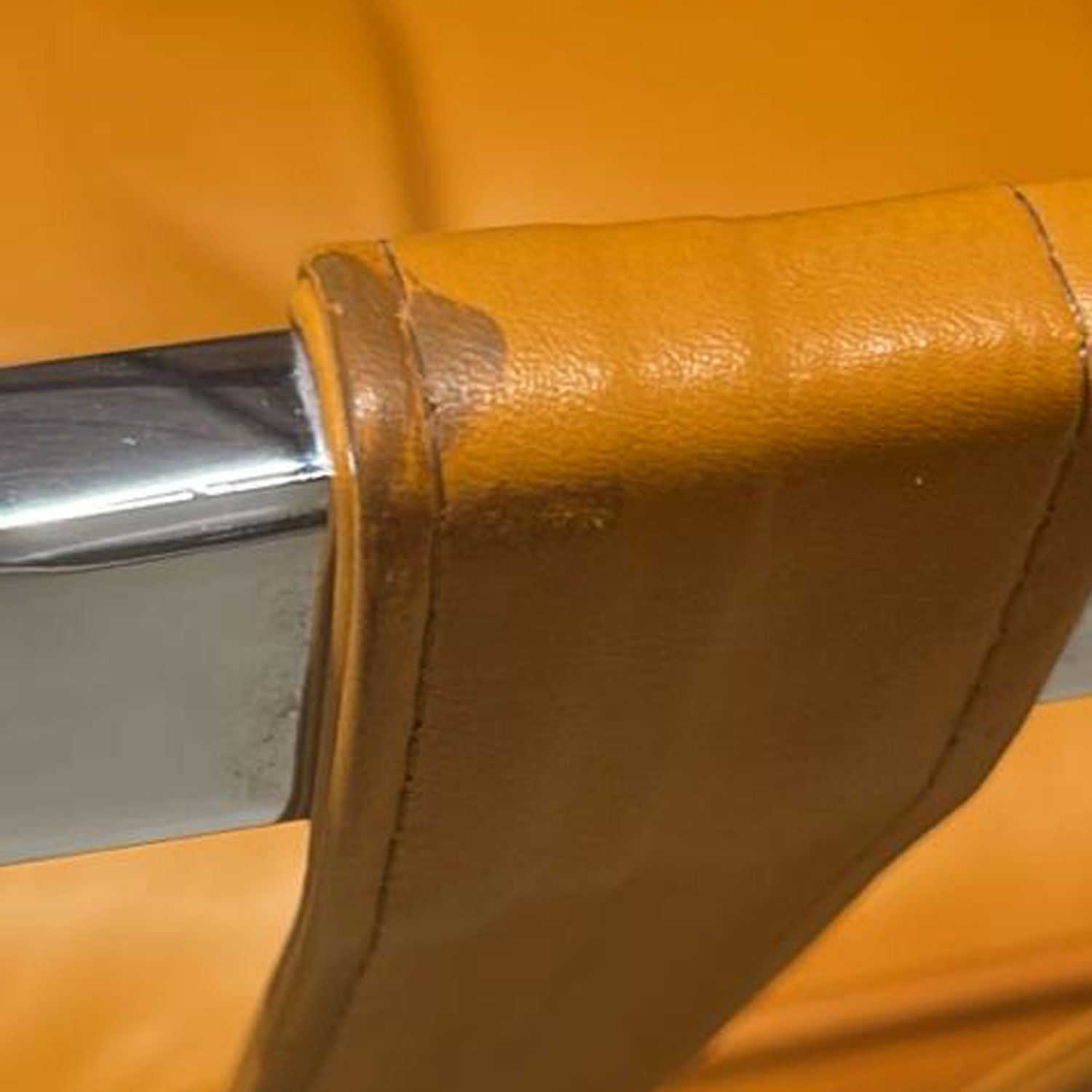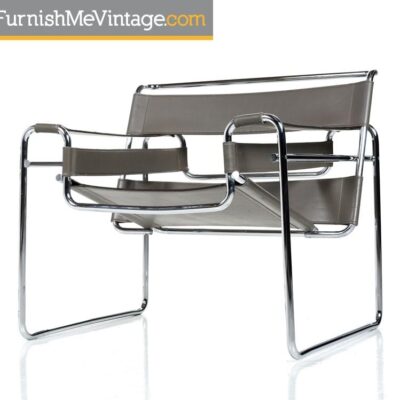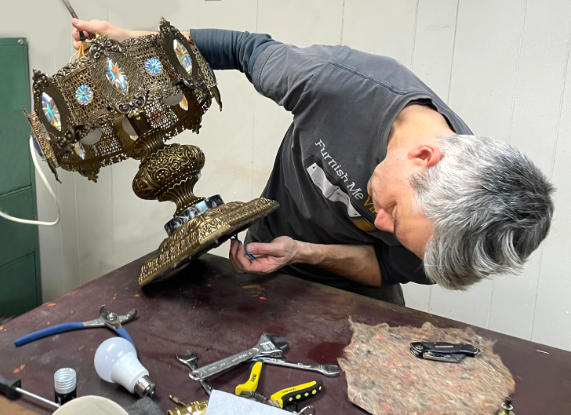Description
We purchased this set from the original owner who’s owned them since 1972. These rare reproductions of the original Mies van der Rohe Barcelona Chairs were made by Bernhardt’s Flair Division in Lenoir NC. We’ve seen several of Flair’s Flat Bar Chairs over the years, but never the Barcelona. The quality is unmatched. The weight is substantial, and probably even exceeds the models made by Knoll. The genuine leather is cut, sewn, assembled and tufted to the original MVDR specifications. Not only is the original leather still in very good condition, but the butterscotch color and soft feel of the leather is sublime. The original tags are sewn inside the cushions, and illustrate that the chairs were shipped and sold by Broadway Department Stores.
Polished chrome structure hand-buffed and hand-finished to a mirror finish.
The cushions are upholstered with 40 individual panels cut, hand-welted and hand-tufted from a single hide. Seat and back cushions adapt to fit the curve of the frame. Side and edges of upholstery straps are dyed to match specified upholstery color.
As a rising figure of the modernist movement, Ludwig Mies van der Rohe was selected to design the Weimar Republic’s Pavilion for the Barcelona Industrial Exposition of 1929.
Through masterful proportioning and planning, Mies created a rhythmic and entirely unprecedented space, which elevated industrial-age materials to a level of grace never before achieved. Inside, Mies included chairs and stools conceived as a resting place for the King and Queen of Spain. Determined to create a chair worthy of royalty, Mies is thought to have based the designs, with their signature criss-cross frames, on the campaign chairs of Ancient Rome. Mies: “I feel that it must be possible to harmonize the old and new in our civilization.”
Although the Barcelona Pavilion only stood for seven months, it is recognised as a defining achievement of modern architecture, as are the accompanying Barcelona Chairs (although the King and Queen reportedly never sat in them).
Ludwig Mies van der Rohe began his career working in his father’s stonemasonry business. After an apprenticeship with furniture designer Bruno Paul in Berlin, he joined the office of architect Peter Behrens, whose work presaged the modern movement. In 1912, Mies established his own office in Berlin, and later became a member of the Deutscher Werkbund and Director of the Bauhaus.
He immigrated to the United States in 1938, setting up a practice in Chicago. His buildings include the German Pavilion for the 1929 Barcelona Exposition, the Tugendhat Villa in Brno, Czechoslovakia, the Seagram Building, designed with Philip Johnson, a cluster of residential towers along Chicago’s Lakeshore Drive in Chicago, and the Illinois Institute of Technology campus, where he was the director of architecture.
Ludwig Mies van der Rohe (1886 – 1969) Birthplace Germany
Dimensions:
31.5″ Wide x 32″ Deep x 34.5″ High (18.5″ seat height)

